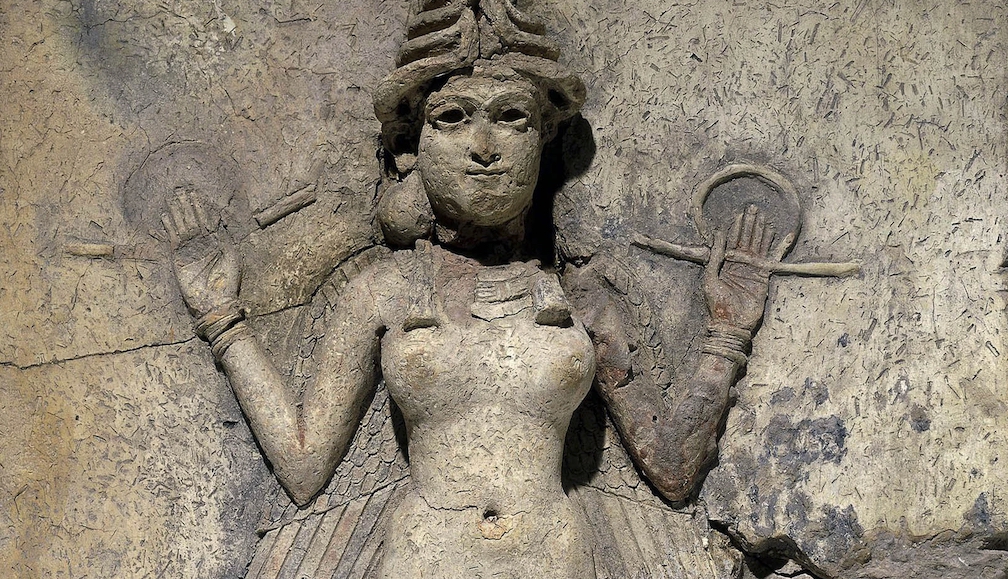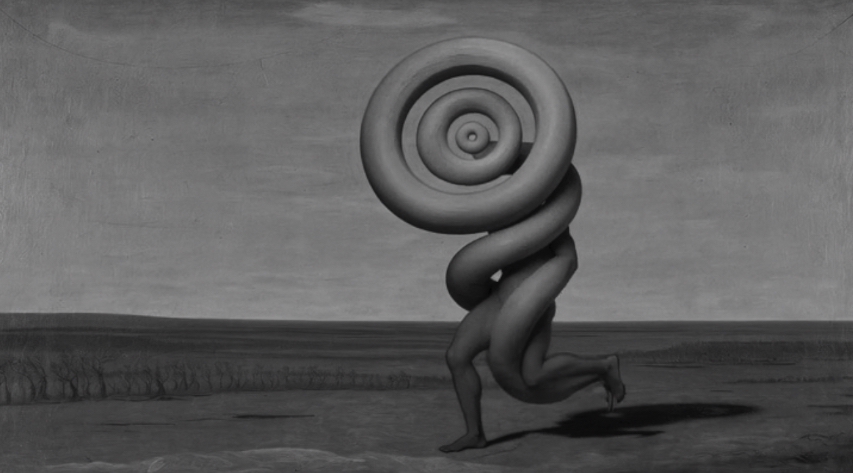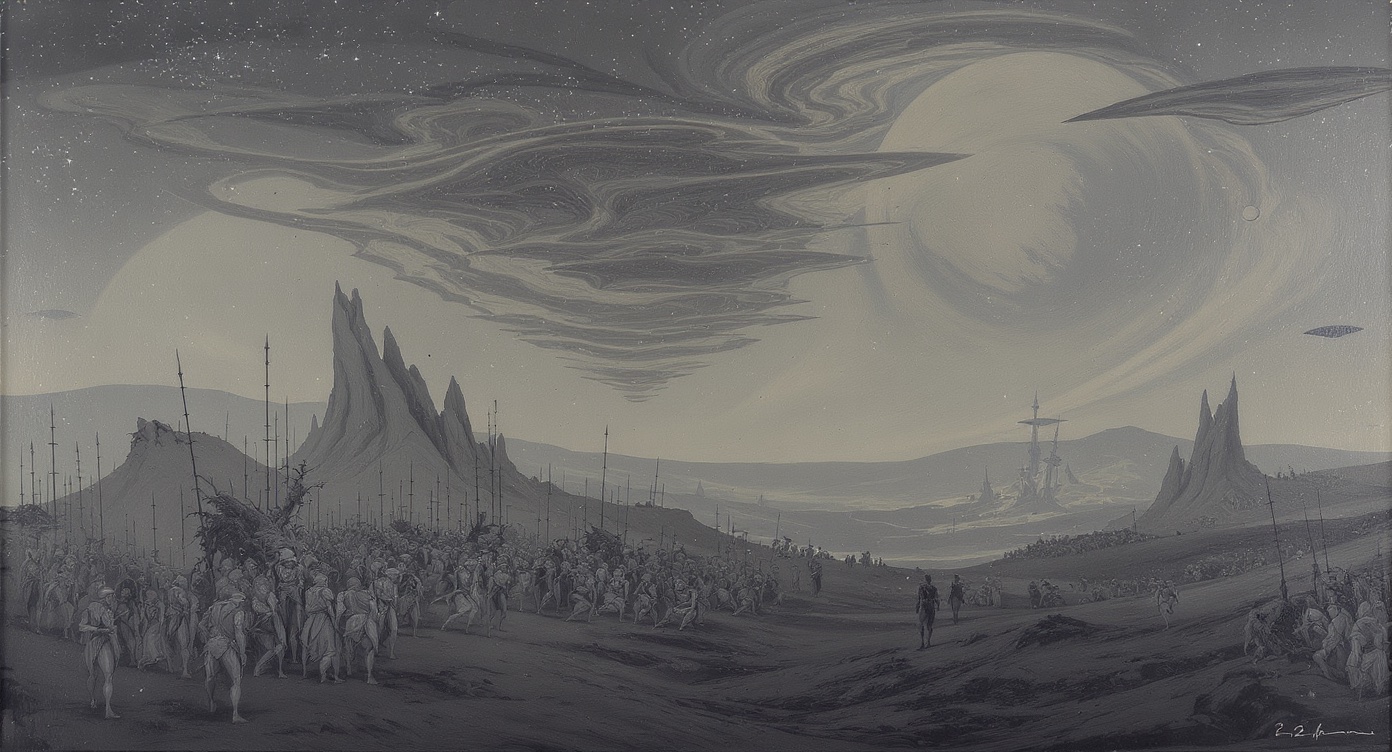She waits: wings folded, eyes wide, claws extended.
Menace and ritual. Perhaps 3,800 years old – but really, eternal.
The Burney Relief stares back, showing what we fear and what we worship.
A woman stands nude, crowned with horns, her talons clutching the backs of lions, owls flanking her in a symmetry that is deliberate, unnerving. The crown says goddess. The lions say Inanna. The owls say night. The claws say underworld. Scholars rename her endlessly: Inanna, Lilitu, Ereshkigal, Ishtar.
She is all of them, or none.

In Thaïs the Athenian, * (Таис Афинская) 1972, Ivan Efremov returns the relief to its temple.
Thaïs encounters not an artifact in a vitrine but a living cult-object, still burning with the pigments of antiquity. Seen through her eyes, the figure does not represent. She is. Her presence unsettles: she is Eros and she is Death. She is not seductive despite the terror, but through it.
To want her is to already submit.
Here is the passage from Chapter IX: AT THE MOTHER OF THE GODS:
‘To exercise the horses properly, Thaïs turned north. After traveling about a parasang, she climbed a ridge along a side valley of a Euphrates tributary. Gnarled, branching oaks surrounded a moss-covered gallery with four columns, sheltering a statue of Ishtar Kutitum, carved from smooth, gray stone. Her green-gold chrysolite eyes glinted in the shadows. The lightly sculpted, Scythian face – framed by shoulder-length cropped hair – held a look of quiet contempt.
At the rear of the gallery, behind the statue, a narrow passage led to a small chamber, brightly lit by wide openings in the roof. In a niche on the eastern wall, above a blackened wooden altar, a clay plaque was set -baked and crowded with sculpted forms.
A naked goddess stood upright, legs pressed tightly together, ending in owl’s claws sharp as blades. Her arms were raised, palms forward, at the level of her face. In her left hand, a knotted rope was clearly visible. On her back, owl wings were carved, reaching halfway down her thighs. Traces of feathers showed above the ankles.
The goddess stood on the back of a lion. Behind it lay a second lion, its head turned in the opposite direction. At the bottom corners of the plaque, two colossal owls loomed – far larger than the lions themselves. Along the lower edge, scaly ridges symbolized a mountain range.
The entire relief had once been painted in vivid color: the goddess’s body in red, the lions’ manes in black. On her wings and the owls’, black and red feathers alternated in careful rhythm.
From the entasis of the goddess’s body, drawn tight like a string, and from her hideous companions with their terrible claws and wings, Thaïs was seized by a kind of fear – one that vanished at once before the awe inspired by the goddess’s physical beauty.
The slender, powerful legs, the strikingly high, hemispherical breasts – like those Thaïs had seen only in Cretan or late-Hellenic statues – the narrow torso and curved hips – all fused into a harmonious image, full of sensual power.
The goddess was the seductress Astarte-Ishtar, aggressive in her feminine power over beasts and men – more fearsome than Rhea-Cybele, more mysterious than Artemis or Aphrodite.
Thaïs bowed low before the ancient statue and vowed to bring her flowers.
Later, when the Athenian questioned the high priestess about the strange winged goddess, she learned that in the temple of the Mother of the Gods, during the time of the ancient kings of Mesopotamia – over fifteen hundred years ago** – there had been separate sanctuaries for Ishtar-Qutītum, who was worshiped alongside the Queen of the Night: the goddess Lilith, who is only one of the incarnations of the Great Mother.
Lilith is a goddess associated with the cult of male love, and the rope in her hand is a symbol of that obligation. As a sign of their service, her priestesses would tie a thick rope around their heads. It is likely that Ishtar-Qutītum became the prototype of the Syrian and Phoenician goddess Kotytto, who was revered as the inspirer of mad passion.’
*Thaïs the Athenian has been translated into Czech, German, Polish, Hungarian, Bulgarian, and a few others, but no official English translation exists. In English-speaking circles, Efremov is mainly known for his sci-fi (Andromeda, Razor’s Edge), not his historical novels. Any English versions you might find of Thaïs are unofficial translations, like this one.
**Thaïs’ encounter takes place in 331 BC, just before Alexander’s conquest of Persia.

→ For completists, obsessives, and people with too many tabs open.
Go root around in the archive. It’s messy, but so is life: themaladapted.substack.com













